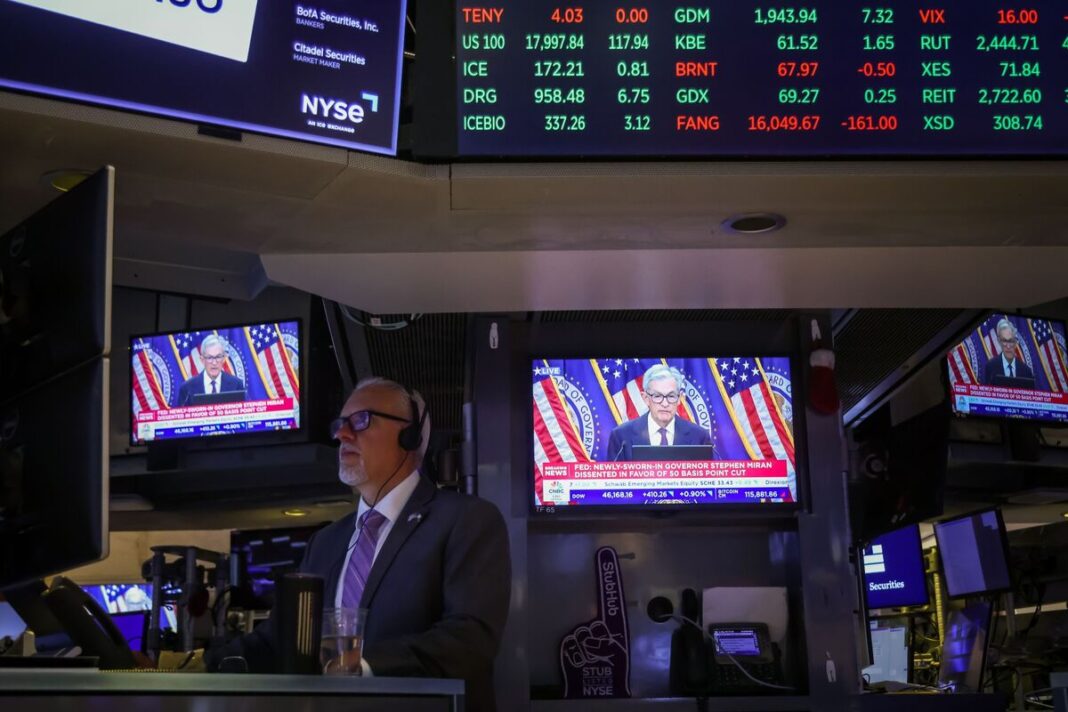U.S. Equities Surge on Federal Reserve’s First Rate Cut of the Year
On Thursday, the U.S. stock market experienced a notable rally, with equities jumping as a risk-on sentiment swept through Wall Street. The catalyst for this surge? The Federal Reserve’s decision to implement its first interest rate cut of the year, signaling a willingness to support economic growth amid ongoing global uncertainties. This pivotal move not only invigorated investor confidence but also set the stage for future monetary policy adjustments.
Understanding the Fed’s Rate Cut
The Federal Reserve’s decision to cut interest rates is significant for multiple reasons. Primarily, lower interest rates reduce borrowing costs for consumers and businesses alike. This could lead to increased spending and investment, which ultimately fosters growth within the economy. Investors often view rate cuts positively, as they typically suggest an accommodative monetary policy aimed at sustaining economic dynamism. This rate cut comes amid signs of slowing growth, making it an essential maneuver to reassure markets and stimulate economic momentum.
Market Response: A Rallying Cry
Following the Fed’s announcement, U.S. equities responded with gusto. Major indexes, including the S&P 500 and the Dow Jones Industrial Average, surged as investors flocked to buy shares. Technology stocks, often sensitive to interest rate changes, led the charge as companies like Apple and Microsoft showcased remarkable gains. The jump in consumer stocks also underscored the optimistic sentiment pervading Wall Street, suggesting that investors were feeling more confident about future earnings as the economic environment becomes more favorable.
Risk-On Sentiment Explained
A “risk-on” sentiment in financial markets indicates a willingness among investors to engage in riskier assets, such as equities, rather than safer investments like bonds. This shift often occurs when investors feel reassured by central bank policies, like rate cuts, which typically lower the risk premium associated with equities. Investors are more inclined to place their bets on growth-oriented sectors, betting that reduced borrowing costs will lead businesses to expand and consumers to spend more freely.
The Broader Economic Context
The backdrop against which the Fed made this decision is important to understand. The global economy has been facing challenges, from trade tensions to inflationary pressures. Concerns about a potential slowdown in economic activity have loomed large, prompting the Fed to act. By cutting interest rates, the Fed aims to mitigate these concerns, fostering an environment where economic growth can continue. It reflects an acknowledgment of the intricate balance the Fed must maintain—supporting growth while also ensuring inflation remains under control.
Implications for Future Monetary Policy
The Fed’s signaling of more rate cuts to come is noteworthy. It indicates an ongoing commitment to adapt monetary policy in response to economic indicators. Investors are likely to remain engaged as they watch for cues on how many more cuts may be in store and how these decisions will affect various sectors. The prospect of an extended period of low rates could reshape investment strategies, with many adjusting their portfolios to align with an environment of sustained low borrowing costs.
Investor Sentiment and Future Projections
With this initial cut in interest rates, investor sentiment appears buoyed. Many are optimistic about the opportunities that lie ahead, especially in sectors like technology, consumer discretionary, and financial services, which often benefit from a lower interest rate environment. However, while the immediate response is positive, analysts will be closely monitoring economic indicators, including inflation rates and GDP growth, to gauge the long-term viability of the Fed’s policies and their effects on market dynamics.
By stepping into a more accommodative stance, the Federal Reserve aims to navigate the complexities of today’s economic landscape, hoping to secure stability and growth while instilling confidence among investors. The ripple effects of this decision will likely resonate through the markets for some time, shaping the investment landscape into the future.



